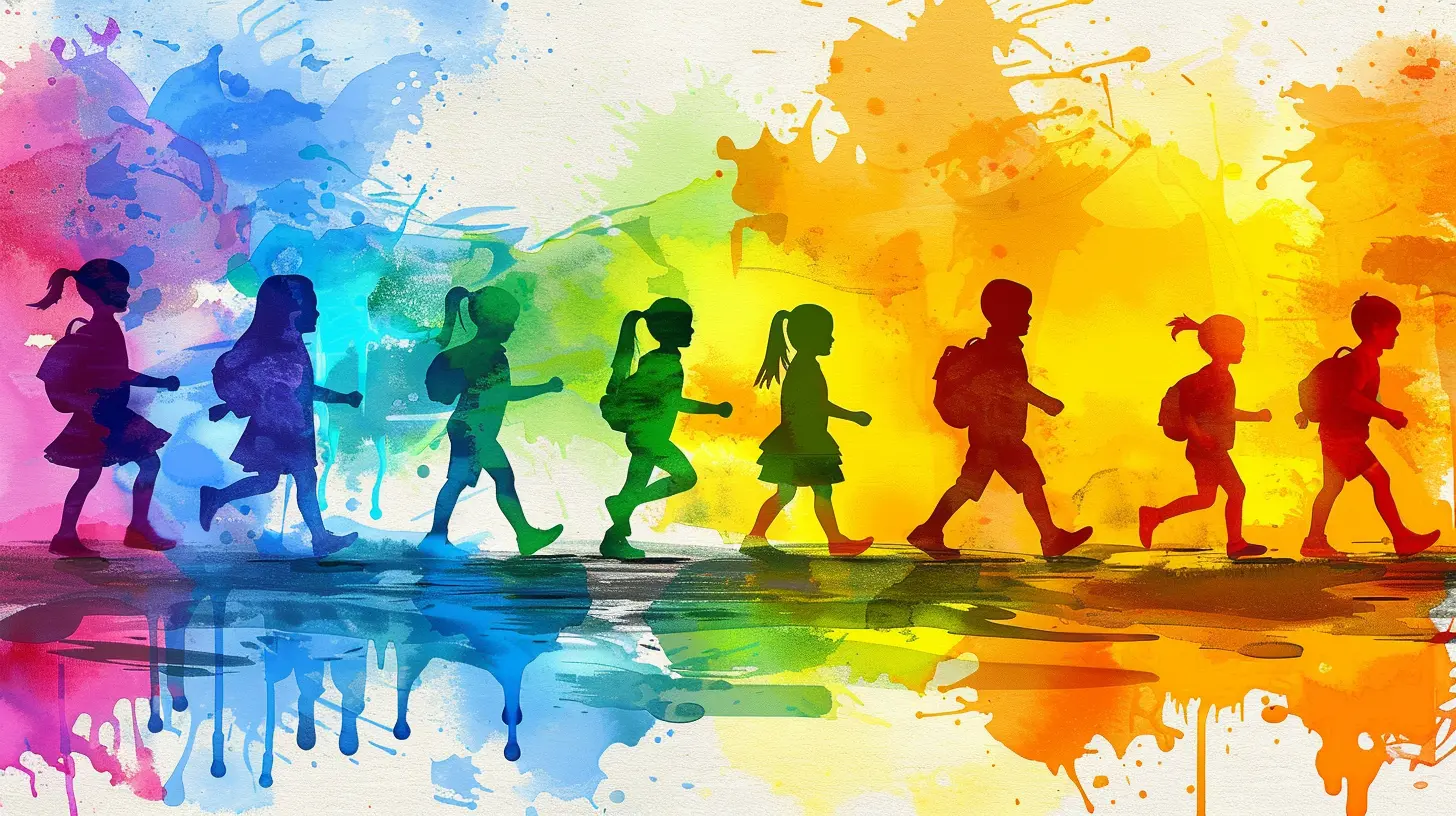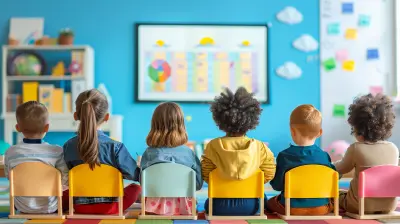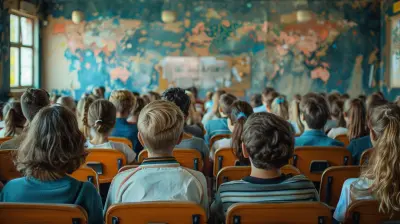18 April 2025
Ever seen a classroom full of students fidgeting in their chairs, gazing out the window, or doodling instead of paying attention? Yeah, it’s not a great sign. The truth is, sitting still for hours on end isn’t just boring—it’s unnatural. Kids (and let’s be honest, adults too) need to move!
So, what if we flipped the script and made movement a key part of learning? Imagine students literally jumping into math problems or acting out historical events instead of just reading about them. Sounds fun, right? Well, it's also incredibly effective. Let’s dive into why movement matters and how you can bring it into your classroom without wreaking total havoc. 
Why Movement in the Classroom Is a Game-Changer
The Brain-Body Connection
Did you know that physical activity actually boosts brain power? Yep, science says so! Movement increases blood flow to the brain, which means better focus, memory retention, and problem-solving skills. It’s like hitting the refresh button on a sluggish computer—suddenly, everything starts working better.Keeps Students Engaged (and Awake!)
We've all been there—droning on about an important concept while students slowly slide down their chairs like melting snowmen. Movement keeps them engaged, alert, and actively participating. When students are physically involved in the lesson, they're way less likely to tune out.Encourages Collaboration and Social Skills
Group activities that incorporate movement naturally build teamwork and communication skills. Whether it’s a game, a scavenger hunt, or a role-playing exercise, students have to work together, problem-solve, and (gasp!) talk to each other in meaningful ways.Supports Different Learning Styles
Not all students learn best by just listening or reading. Some need to see, move, or physically engage with the material. Movement-based activities give kinesthetic learners a fighting chance while reinforcing concepts for everyone else.
How to Incorporate Movement in Everyday Lessons
Okay, so movement in the classroom is awesome. Now what? Let’s break it down with some practical, easy-to-implement ideas that won’t turn your class into a chaotic free-for-all.1. Start with Brain Breaks
Before we talk full-on movement-based lessons, let’s ease in with brain breaks. A quick stretch or a one-minute dance-off between activities can reset attention spans and get students refocused. Some fun ideas:- The 30-Second Shakeout – Shake out hands, arms, legs, and even heads to loosen up
- Jumping Jack Math – Solve problems with jumping jacks (e.g., 3 + 4 = seven jumping jacks)
- Freeze Dance – Play music for 30 seconds, students dance, and when it stops, they freeze in place
These are quick, effective, and require zero prep!
2. Turn Review Sessions into Movement Games
Who says test review has to be a snooze fest? Make it active! Try:- Four Corners Review – Label each corner of the room with different answer choices (A, B, C, D). Ask a multiple-choice question and have students move to the corner they think is correct.
- Quiz Race – Divide the class into teams and have them race to a whiteboard to answer questions. The catch? They have to hop, skip, or crab-walk their way there!
- Hot Potato Q&A – Toss a soft ball around the room while music plays. When it stops, the student holding the ball answers a question.
3. Make Lessons Physical
Want students to really absorb a lesson? Get them moving while they learn!- Act It Out – If you're teaching history or literature, let students role-play historical events, reenact scenes, or even create their own skits.
- Walking Debates – Instead of sitting and discussing, have students physically move to different areas of the room to represent their stance on a topic.
- Human Number Line – Teaching positive and negative numbers? Have students physically stand on an imaginary number line instead of just looking at one on paper.
4. Scavenger Hunts and Escape Room Challenges
Ever tried an educational scavenger hunt? It’s a hit every time!- Math Hunt – Hide math problems around the classroom. Students have to find and solve them to move on to the next step.
- Grammar Escape Room – Lock a "treasure chest" (okay, maybe just a decorated box) and have students solve grammar puzzles to get the combination to open it.
- Science Exploration Walk – If possible, take students outside to find real-world examples of what they’re learning—shapes in nature, physics in action, you name it.
5. Use Classroom Stations with Movement
Rotate between different activity stations to keep students moving while they work. Set up a few learning stations around the room, and after a set time (say, 10-15 minutes), students move to the next one. This keeps things fresh and prevents "zoning out."
Addressing Teacher Concerns: Managing the Chaos
Now, if your first thought is, This sounds fun, but won’t my classroom turn into a circus?—I hear you. Movement can get a little wild if it’s not managed well. Here are some tricks to keep things controlled:1. Set Clear Expectations
Before jumping into any activity, lay down some ground rules. For instance:- Stay in your designated space.
- Listen for cues to stop and start.
- Participate respectfully (no shoving, pushing, or excessive goofing around).
2. Use a Timer
Structure is key. Set a timer for activities to keep things moving without dragging on too long.3. Have a Signal for Quieting Down
Teach students a simple signal for when they need to settle down—clapping a rhythm they repeat back, raising your hand, or flicking the lights off and on.4. Pair Movement with Purpose
Activities should always tie directly into the lesson. If students know they’re moving for a reason, they’re more likely to stay on task.
The Bottom Line
Incorporating movement into your classroom isn’t just a fun idea—it’s a necessity. When students move, they engage, retain information better, and genuinely enjoy learning. Plus, let’s be honest… it makes teaching way more fun too!So, next time you see those droopy eyes and restless legs, don’t fight it—embrace it! Let movement be the secret weapon that transforms your classroom into an active, dynamic learning space.




Bellamy McClellan
Embracing movement in the classroom ignites passion and creativity! By integrating dynamic activities, we empower students to engage actively, fostering a love for learning that transcends traditional boundaries. Let's inspire futures through motion!
April 21, 2025 at 7:19 PM